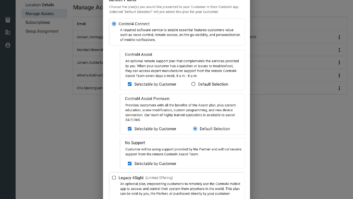
Dave Chace ([email protected]) is
president of Training Allies, a CE-focused
training firm in Philadelphia.The perfect employee is hard to come by. If you’re blessed enough to have employees who follow every rule religiously and never give you cause for concern, you’re done here. Turn the page. More likely, you’ve learned to take the bad with the good, understanding that no one’s perfect, and managing people means occasionally addressing employee issues before they get out of hand.
Handling these situations effectively doesn’t have to be an awkward or uncomfortable experience, so long as you have a sensible, consistent approach, which should begin when the employee is first hired.
Minimizing problem behavior on the job starts with clear standards, so each employee should have a job description showing their responsibilities and tasks. If your people don’t know what the standards are, it’s hard to hold them accountable.
Even with clear standards, problem behaviors tend to crop up in several areas, including punctuality, appearance, work standards (like your preferred style of cable management), and what to say–and what not to say–to clients (e.g. “Yep, these receivers all overheat.”) When these behaviors do crop up, here is a simple plan for correcting them before they get out of hand.
Step 1: Don’t Wade in…Jump
Few people enjoy having a hard conversation about poor performance; they avoid it, or they use sarcasm to approach it indirectly, “Hey, you’re on time! That’s once in a row!”

When you have a problem with an employee (they’re always late to work), the important thing is to agree on a workable plan that they come up with. If their idea isn’t feasible (“How about I start at 9:30 instead of 7:30?”) you can simply say no.The right move is to simply lay the issue on the table. Pull the employee aside and say, “I want to talk to you about part of your performance that isn’t meeting our standards. You’ve been late twice this week.” Instantly both of you know it’s an issue you have to deal with it–right now.
Step 2: Get the Backstory
Next, ask them for the story behind the issue (e.g. “What’s causing the problem?”) and then let them talk. It’s important not to show anger at this point, or it’s likely they won’t tell you what’s really going on. They may surprise you by revealing the root cause (“I’m working a night job to avoid losing my house”) or by apologizing and promising to knock it off.
Step 3: Ask Them What They’re Going to Do About It
When people voluntarily commit to doing something, the odds of them actually doing it go up dramatically. Ask, “What are you going to do to fix the problem?” and let them outline a solution. You can also ask if there’s anything you can do to help, if you feel it’s appropriate. The important thing is to agree on a workable plan that they come up with. If their idea isn’t feasible (“How about I start at 9:30 instead of 7:30?”) you can simply say no. They’re your standards, and you shouldn’t bend them for any one employee.
Step 4: Tell Them What’s Going to Happen
Poor behavior should result in a consequence, or it’s not likely to stop. Here is a common course of action: first offense results in a verbal warning saying if the problem persists a written warning will be issued; the second offense triggers a written warning that says if the behavior doesn’t stop, employment will be terminated; and after the third offense employment is terminated.
It’s powerful to tell someone, “This is your second offense, so I’m giving you a written warning. It says if you repeat the behavior again in the next 90 days, your employment will be terminated.” Ideally, when faced with this specific and somber consequence, the employee will see the light and get his act together.
Give them a vote of confidence at this point by saying something like, “You’re a valuable member of the team. I believe you can put this behind you and do a top notch job.” Your tone of voice should convey, “I believe in you, and you’re better than this.”
Step 5: Document it
When you’re done, make notes about the date, what happened, and about the plan going forward, then put it in the employee’s file. If you’re delivering a written warning, they’ll need to sign it. It’s also a good idea to speak to a human resources pro to determine what other documentation is required in your company and state.
Correcting problem behavior can be constructive and low stress if you follow the simple plan. Like kids, employees respect and appreciate guidelines and consequences. Turning a blind eye means risking your team, your customers, and your business. Is that worth it?







